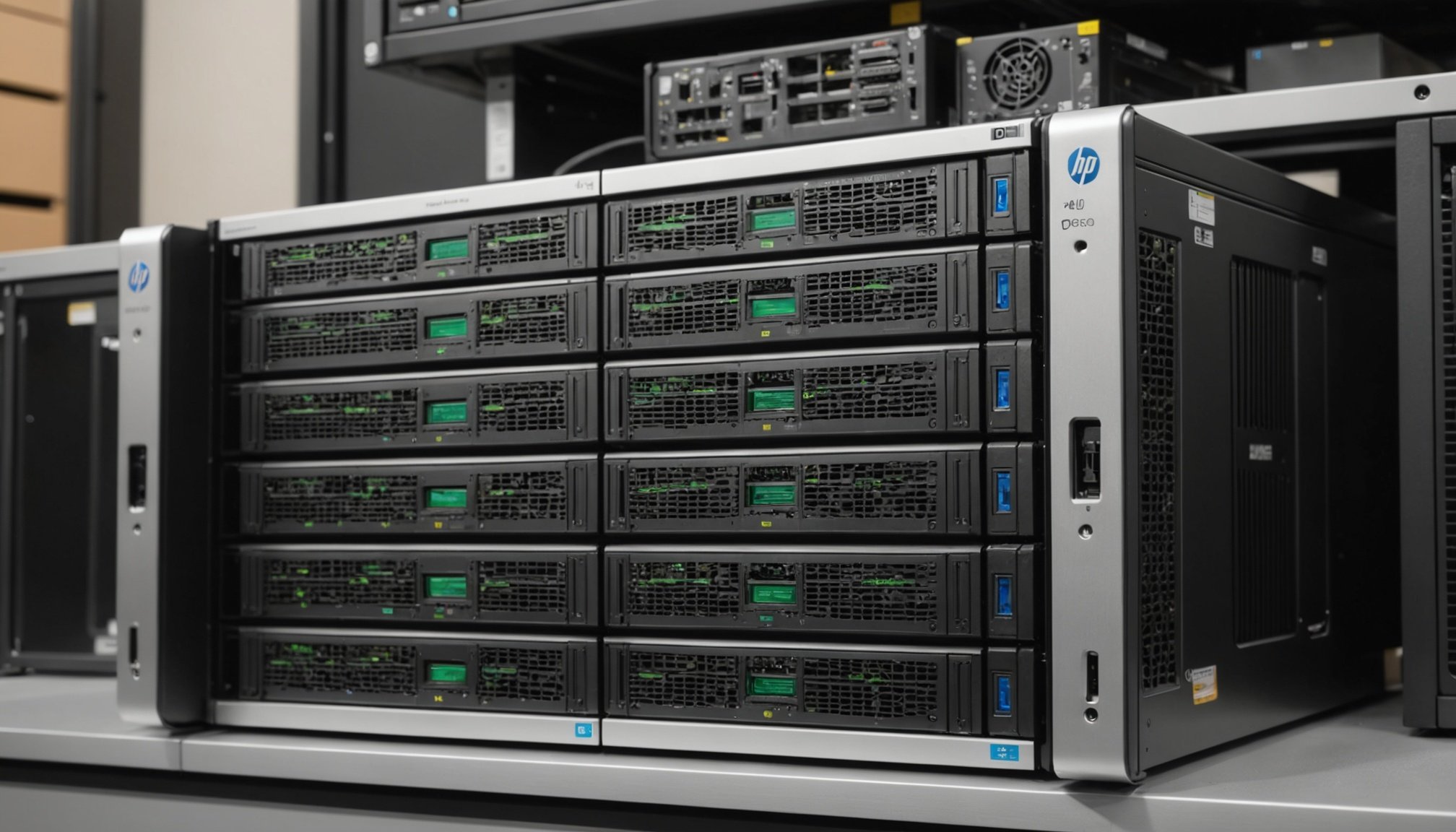Prerequisites for Virtualization on HP ProLiant DL380 Gen10
Understanding the virtualization prerequisites for the HP ProLiant DL380 Gen10 is crucial to ensure a seamless setup. Ensuring hardware compatibility with your chosen virtualization platform is an initial priority. The HP ProLiant DL380 Gen10 supports a range of processors and memory configurations, but these should match the specifications required by your virtualization software to avoid performance bottlenecks.
Keeping your server’s firmware and BIOS updated is equally important. Firmware updates often include security patches and support for new features, which are pivotal for maintaining system stability and unlocking enhancements. Regularly check for updates and apply them to prevent potential vulnerabilities and incompatibilities.
Also to see : Unlock superior graphics performance: a step-by-step guide to installing an external gpu on your dell xps 13
Resource allocation plays a vital role in your virtualization strategy. Assessing your application requirements will enable you to allocate memory, CPU power, and storage appropriately, ensuring each virtual environment functions efficiently. Planning includes determining the cumulative resource needs of all applications and virtual machines expected to run concurrently.
Proper preparation and planning will set the stage for a successful virtualization setup, enhancing efficiency and reliability on the HP ProLiant DL380 Gen10.
Topic to read : Ultimate sound experience: your essential guide to configuring a sonos arc multi-room audio system with google assistant
Installation of Virtualization Software
Selecting the right hypervisor is crucial for optimizing your environment. It should align with your needs and infrastructure capabilities. Options like VMware and Hyper-V are renowned in the industry for their robust features and compatibility. Once a decision is made, proceed to installation.
Step-by-Step Installation Process on the DL380 Gen10
Begin the hypervisor setup on the DL380 Gen10 by ensuring hardware compatibility. Insert the bootable media of your chosen virtualization software and power on the server. Follow on-screen instructions to install the hypervisor, typically involving disk selection for software storage.
After installation, configure initial settings to tailor your setup. Network configuration is key; ensure that your server is connected to the proper VLANs and IP configuration. Adjust host settings as needed for performance and security.
The seamless installation of virtualization software is a multi-step journey. Each step prepares the infrastructure to host multiple virtual machines efficiently. Understanding hardware and software compatibility can significantly impact ease of setup and subsequent performance. Choose your software wisely to unlock the full potential of the DL380 Gen10, ensuring a streamlined, responsive virtual environment.
Configuring Virtual Machines
Setting up a virtual machine (VM) involves a thorough understanding of VM settings to ensure optimal performance and functionality.
Setting up Virtual Machine Parameters
To configure a virtual machine efficiently, start by defining CPU and memory allocations. This step involves assigning an appropriate number of CPUs and sufficient memory to meet the demands of the tasks the VM will handle. An incorrect allocation could lead to performance bottlenecks or wasted resources.
Networking Configuration
Networking within a VM can be tailored to specific needs by choosing between isolated or bridged interfaces. An isolated configuration keeps your VM network separate from your host, providing enhanced security. In contrast, a bridged setup connects your VM directly to the host’s network, making it ideal for scenarios requiring the VM to communicate with other network devices.
Storage Allocation
Proper storage allocation is vital for VM efficiency. You must allocate enough disk space for current and anticipated data requirements. Additionally, consider whether to use thin or thick provisioning. Thin provisioning is more flexible, allowing dynamic expansion as needed, whereas thick provisioning dedicates storage upfront, which can improve performance through reduced disk overhead. Adjusting storage settings appropriately ensures that the VM runs smoothly without wasting resources.
Resource Allocation and Management
Effective resource allocation strategies ensure optimal VM performance. Key techniques involve distributing resources like CPU, memory, and storage across virtual machines (VMs) efficiently. It is crucial for maintaining balance and preventing any single VM from monopolizing resources. Techniques include setting resource limits and priorities to manage allocation dynamically.
Monitoring resource usage is essential in assessing the performance of VMs. Utilising tools and metrics to track CPU, memory usage, and disk activity helps inform decisions. With accurate data, administrators can identify bottlenecks or underutilized VMs, adjusting allocations accordingly.
Allocation adjustments should reflect application demands. As workloads fluctuate, resources must be reassigned to ensure optimal performance. Automated tools can be employed to adjust allocations in real-time, responding to changing demands efficiently. Best practices involve regular assessments and updates of allocations to align with evolving requirements and priorities.
By employing strategic resource allocation and diligent monitoring, businesses can enhance VM performance and meet application needs effectively.
Performance Tuning Techniques
Optimizing virtualization performance is crucial to ensure efficient use of resources. Begin with best practices such as allocating the right amount of CPU, memory, and storage to virtual machines. Avoid over-provisioning, which could lead to unnecessary resource throttling.
Tools for performance monitoring are indispensable. Benchmarking utilities can help identify bottlenecks and enable targeted improvements. Real-time monitoring can alert administrators to potential issues before they impact users.
Advanced settings can further enhance performance optimization. For instance, enabling hardware-assisted virtualization features can offload processing tasks to physical components, boosting efficiency. Additionally, adjusting parameters such as disk cache settings and network adapter configurations can lead to significant performance gains.
Consider employing performance tuning tools like VMware’s vSphere Performance Charts. These provide data-driven insights into resource utilization, helping in making informed decisions to fine-tune settings.
Implementing these techniques not only promotes optimal operation but also ensures a robust and reliable virtualization environment. With precise tuning and continuous monitoring, virtualization platforms can maintain high performance even under demanding workloads.
Troubleshooting Common Issues
Addressing problems effectively is key to maintaining seamless operations. Here, we explore typical issues related to HP DL380 Gen10 and provide solutions.
Identifying Performance Bottlenecks
Performance issues can often arise from improper virtualization setups on the HP DL380 Gen10. First, check your resource allocation. Are your virtual machines (VMs) hogging CPU or memory disproportionately? You might need to adjust these allocations. Network bandwidth can also be a factor; ensure your connections are optimized.
Resolving Configuration Errors
Configuration problems can lead to system downtime. Begin by double-checking your initial setup against HP’s specifications. Ensure firmware updates are correctly installed. If virtualization troubleshooting shows incorrect network configurations, reexamine your settings to align with manufacturer guidelines.
Common Pitfalls and Solutions
Missteps during deployment can cause headaches. Avoid overcommitting resources, as it causes VMs to underperform. Also, regularly audit your virtualization environment to catch misconfigurations early. Using HP DL380 Gen10 management tools helps in promptly identifying and resolving issues.
By adhering to these strategies, you minimize disruptions and maintain optimal system performance.
Best Practices for Multi-Application Environments
Navigating a multi-application setup can be complex, but strategic guidelines can help optimize performance. Managing resource contention is crucial. It ensures that each application receives the necessary resources without unnecessary overlap, which could lead to performance degradation. Implementing effective resource management tools and monitoring systems can anticipate and mitigate contention issues.
Prioritizing application availability and reliability is equally important. Regular system checks and scheduled maintenance can preserve uptime. Utilizing redundant systems can further enhance reliability by maintaining functionality even if one part fails.
When considering virtualization best practices, it’s vital to adjust scaling and virtualization strategy to accommodate growth or demand surges. Efficiently deploying virtual machines across different servers can maximize hardware utilization and provide flexibility in resource allocation.
Adopting these practices within a multi-application setup creates a stable environment where applications coexist without bottlenecks or downtime, ensuring they perform optimally. This approach supports a seamless integration of new applications and allows for adjustments as technological needs evolve.











